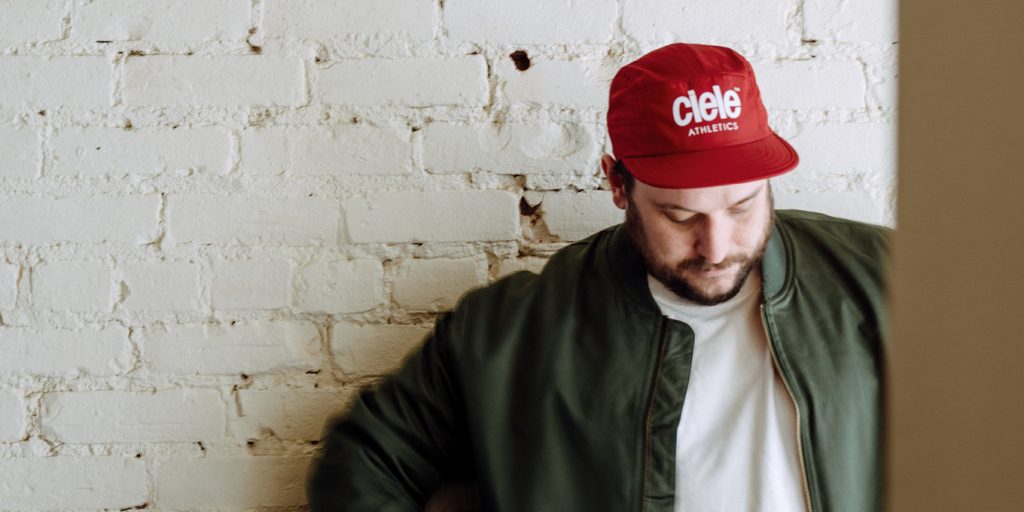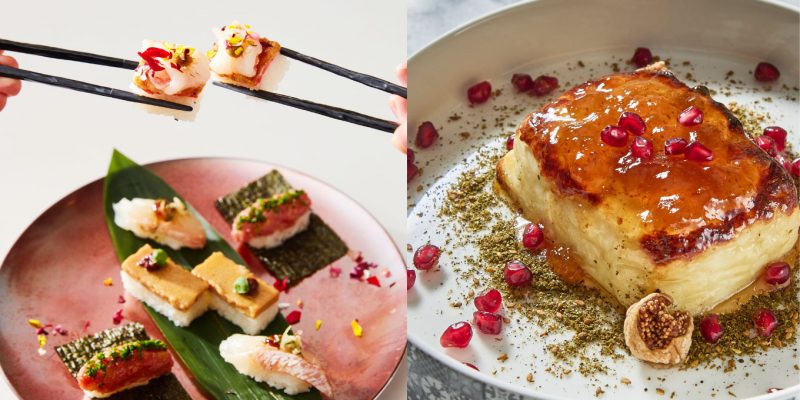Food & Drink
Le Mousso 3.0
Behind closed doors, pandemic-style, the nascent project "Le Mousso at home" is taking shape. What do a chef’s creations look like when served outside a restaurant’s four walls, far from the usual ambience, with no mood lighting or even a soundtrack?
by : Céline Tremblay Adapted by Zarya Alexandra Rubin- Apr 27th, 2021

Mickaël A. Bandassak
A restaurant is defined by the sum of the impressions it leaves on us. The location, the decor and colour palette, the lighting, the aromas and ambient noise that either annoys or intoxicates us—all of these elements serve to prime our senses, even before the first bite. The pandemic has erased almost all of that. We met up with a chef who’s learning to embrace a concept that is changing the face of the industry.
 Mickaël A. Bandassak
Mickaël A. BandassakThe birth of an unconventional chef
The French chefs who were responsible for Antonin Mousseau- Rivard’s culinary initiation (more hands-on than academic) taught him well: “Except for a pepper sauce, you NEVER cook pepper. And when you add small elements of colour to a dish, always do it in odd numbers.” They had no way of knowing that the young apprentice had been immersing himself in cooking shows since the tender age of nine; or that he had already envisioned his first restaurant, right after giving up the standard boyhood dreams of garbageman, firefighter, policeman and pilot in quick succession.
 Mickaël A. Bandassak
Mickaël A. BandassakLobster, buttermilk and spring-onion vinaigrette.
 Mickaël A. Bandassak
Mickaël A. BandassakOvercoming the challenges of the pandemic is a bit of a hollow victory; like the majority of his gastronomic peers bracing against the crisis, he has hit a lull. Struggling with debt, many chefs now see their teams fragmented, and the concept of take- out is shaping up as the future of the business. For Antonin, who is crafting Le Mousso At Home, at least it presents another avenue to explore. From challenging the theory of three dollops on the plate, to learning not to take anything for granted—and even unlearning things in order to better trust his instincts—Antonin now finds himself on a playing field where there are narrowing options. “Access to products is definitely more limited,” he says. “Many of my employees have retrained—some have even left for the health-care system.” Goodbye to high-end delicacies like homemade soy sauce, hello to transporting dishes that require a hefty dose of letting go of the ideal. For this culinary artist, a perfectionist who knows how to delight our senses in equal measure, the small takeout tray is a far cry from his signature handmade pottery dishware. Le Mousso At Home, which attempts to keep the restaurant’s original DNA in a simplified form, turns out to be more of an experiment than a career plan. On Instagram, the reaction to a post about a new dish from this venture should calm the anxious, award-winning chef a little: “Dude, it looks completely I.N.S.A.N.E., I’m hungry.” The take- away: “I have always packed too much into my life,” Antonin admits. “I am learning to cut back, to clarify, to balance.”
 Mickaël A. Bandassak
Mickaël A. BandassakCrispy pork belly, greens and chanterelles.
“I can't really explain my thought process. It's a calculation, a combination, a dosage. When my instincts tell me to stop, I stop. It's something I feel more than something I can explain. An Italian grandmother can't explain how she cooks, but instinctively she knows what she's doing.”
Antonin took on the constant battle cry of “Why?” when faced with the establishment rules. “If I do a search today,” says the not-quite black sheep of Montreal gastronomy, “I can show you plenty of videos of Malaysian, Chinese or Thai dishes that start with cooked pepper, techniques much older than those used by our fine friends over in France.” He adds, “I always get myself into trouble, but each time I learn how to get myself out of it. I like to break down barriers and make a point not to remember too much about what I’m doing right, so I don’t repeat myself.”
 Mickaël A. Bandassak
Mickaël A. BandassakFoie gras, maple and charcoal cotton candy.
Through Antonin’s Eyes
THE SPACE “For Le Mousso, which is housed in a former South Central printing factory dating back to 1867, a timeless, minimalist and more subdued layout was needed compared to Le Petit Mousso, which followed—it’s more industrial, noisier and more festive, too. Both places represent me: They are perfect in their imperfections; pure without being precious; ordered in their chaos; clean by being dirty, metaphorically speaking.”
THE COLOUR “My most memorable dishes are often the monochrome ones, because we can’t wrap our brains around them. Before you take the first bite, the force of the impact is minimized, relying solely on a combination of flavours, smells and textures. My tendency is to combine foods of similar hue, such as beetroot and red sorrel, or orange and carrot.”
THE LIGHTING “It takes very little light to illuminate that tiny morsel on the plate, but it has to be the right kind. We chose a very directional warm white, to highlight only what should be seen.”
THE PLATES “Our plates are handcrafted by Catherine Auriol at Gaïa Céramique, and over time we have managed to create very minimalist shapes together. The beauty of her creations is in the detail of the proportions, textures and her signature style, making each piece unique. We don’t try to create imperfections, but we do welcome them. Our plates have soul, they evoke emotion. They have a presence, but take up just the right amount of space.”
THE SOUND “The opening of Le Mousso was packed, and one of my cooks pulled me aside and said, ‘Do you realize that while you’re putting little flowers on the plates, customers are eating to Ol’ Dirty Bastard and Snoop Dogg?’ We had let the music we listen to in the kitchen filter into the dining room. Acoustic panels have been installed to prevent noise from ricocheting and to make conversation much more enjoyable, but the restaurant does have a reputation for being loud. In a museum, there’s no law that says we have to be completely silent, and it’s the same story here. Customers are generally between the ages of 30 and 45—they have the right to express themselves and loosen their collars while listening to loud Golden Age rap.”
 Mickaël A. Bandassak
Mickaël A. BandassakMussels, rose vinegar, rhubarb root oil and oxalis.
Newsletter
Join our mailing list for the latest and biggest in fashion trends, beauty, culture and celebrity.
Read Next

VIP
9 Stylish Icelandic Adventures Tailored to Fashion-Conscious Canadians
Iceland’s stylish escapades for the fashion-forward Canadian traveller blend elegance with adventure.
by : Contributor Content- Apr 15th, 2024

Fashion
The Best-Dressed Stars at Coachella Weekend One
Here's what your favourite celebs (and influencers!) wore to kick off Coachella's first weekend.
by : Lauren Knowles- Apr 15th, 2024

Beauty
Tested and Approved: A Skin Saviour That Works While You Sleep
Wake up with your glowiest skin yet—even if you didn’t clock eight hours.
by : ELLE Canada- Apr 11th, 2024




